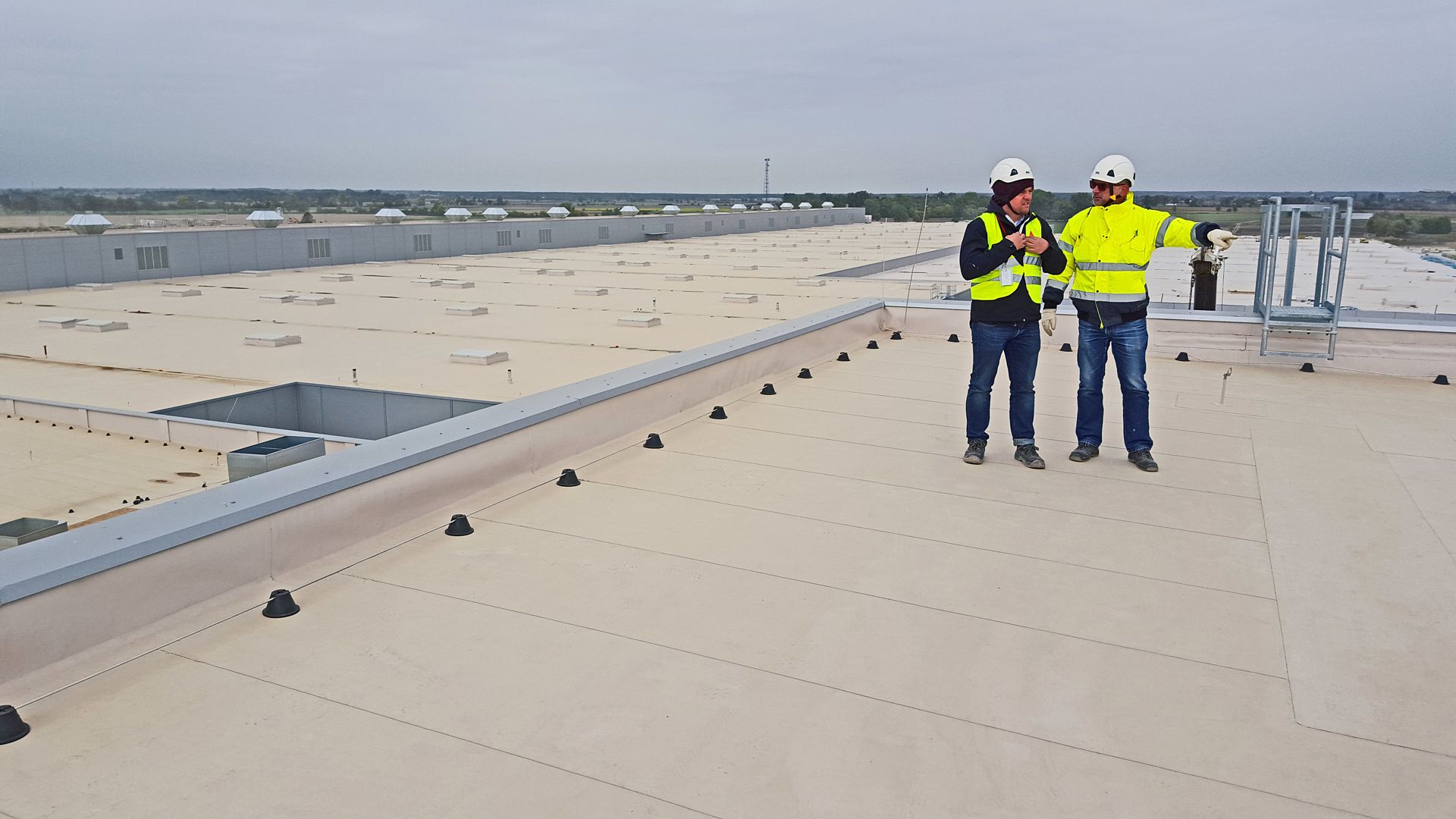Tips, Tricks and Traps for Building Owners
Choosing the right commercial roofing system for your building is one of the most important decisions you will make. The right roofing system will protect your investment for decades, while the wrong system could result in costly repairs. In addition, the nightmare of premature roof failure can keep facility managers and building owners up at night. Every roof system needs to be maintained in some way, and the secret is to discover the little problems before they become big ones.
Take a few minutes to read these tips, tricks and traps to avoid for commercial roofing systems.
Tips
1. Partner with an experienced and proven manufacturer. You get what you pay for. Track record, guaranteed thickness, high grade raw materials, state-of-the art production facilities, detailed design solutions, skilled technical teams and a certified contractor base all result in a winning project.
2. Save energy with a cool roof in all climates. Building owners across the US in both hot and cold climates are subject to peak energy demand charges, which can represent 30 to 70 percent of a total commercial user's electric bill. Reflective cool roofs are an efficient strategy to reduce peak demand power usage and result in a net energy savings.
3. It's always sound roofing practice to develop an in-house roofing maintenance program to increase life expectancy. Cleaning gutters of unwanted debris and sharp objects around mechanical units that could clog or puncture the roofing system is a preventative maintenance fundamental.
Tricks
1. In most jurisdictions, a second roof can be installed over an existing roof saving the owner money on labor, tear -off and land fill fees. Also, make sure a comprehensive moisture survey is conducted before roofing over an existing roof. All wet areas should be removed and replaced to ensure a long lasting new roof installation. Structurally or using tapered insulation slope to drain is always good roofing practice. Ponding water can harbor bacteria, mold growth, dirt build up, etc.
2. Thermoplastic membranes can be tinted various colors to provide design flexibility for a custom look, trademark or company logo. They have the aesthetics of a metal roof, but watertight integrity of hot-air welded thermoplastic membranes.
3. Assign a "roof monitor" for the building, who grants access and keeps track of visitors to the rooftop. If a building owner can monitor rooftop traffic, and the visitors know they are being tracked, there is a better chance that problems associated with damage to the roofing system will be avoided.
4. Keep an up-to-date set of guidelines and a "select or limited" group of people who can call in your "request for service-callouts." By limiting who is authorized to call in the requests, you avoid false calls (running on arrivals) that are normally billable by your service provider.
Traps to Avoid
1. Failure of obsolete parts can lead to lengthy down time and unexpected operating costs. Ask your service provider to give you a list of obsolete parts in your rooftop equipment.
2. Initial cost vs. life cycle cost. In most cases, the lowest cost option appears to be the most attractive, but not always the best long-term solution. Lower cost options tend to have shorter life cycles and increased maintenance costs resulting in replacements that are more frequent and unexpected out-of-pocket expenses. They typically offer the least amount of sustainability value as well. Reroofing can easily cost 2-3 times that of a well designed system and maintenance program on the front end. Consider life cycle costing for a greater ROI.

